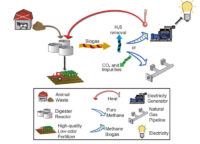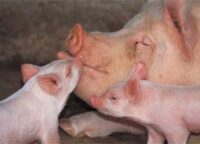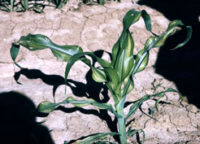- 09, 24, 2015
- Comments Off on Break-Even Method of Investment Analysis – 3.759
- By admin
Break-Even Method of Investment Analysis – 3.759
Print this fact sheet by P.H. Gutierrez and N.L. Dalsted* (3/12) A break-even point defines when an investment will generate a positive return. Fixed costs are not directly related to the level of production. Variable costs change in direct relation to volume of output. Total fixed costs do not change as the level of production […]
Take a Tour- 09, 24, 2015
- Comments Off on Trichomoniasis Prevention: The Cost Per Cow to Prevent – 1.628
- By admin
Trichomoniasis Prevention: The Cost Per Cow to Prevent – 1.628
Print this fact sheet by N. Striegel, R. Ellis, J. Deering 1 (3/09) Quick Facts… A protozoan organism, Trichomonas foetus (Tritrichomonas foetus), is the etiological cause of the disease. The disease itself is called trichomoniasis. The primary mode of transmission is from sexual contact during the act of a bull breeding a cow. No one […]
Take a Tour- 09, 24, 2015
- Comments Off on Best Management Practices for Reducing Ammonia Emissions: Manure Application – 1.631D
- By admin
Best Management Practices for Reducing Ammonia Emissions: Manure Application – 1.631D
Print this fact sheet by S.G. Lupis, J.G. Davis, and N. Embertson* (12/12) Quick Facts… Application of animal manure to crop fields is a potential source of ammonia (NH3) emissions from agriculture. Volatilization of ammonia from land-applied manure is a loss of valuable nitrogen, and can contribute to air quality concerns because NH3 contributes to […]
Take a Tour- 09, 24, 2015
- Comments Off on Best Management Practices for Reducing Ammonia Emissions: Lagoon Covers – 1.631B
- By admin
Best Management Practices for Reducing Ammonia Emissions: Lagoon Covers – 1.631B
Print this fact sheet by S.G. Lupis, N. Embertson, and J.G. Davis* (12/12) Quick Facts… Covering stored liquid manure slows the release of ammonia gas into the atmosphere and reduces the effects of wind and heat on emission rates. Liquid manure stored in a covered facility can have up to 3.5 times the nitrogen content, […]
Take a Tour- 09, 24, 2015
- Comments Off on Anaerobic Digestion of Animal Wastes in Colorado – 1.227
- By admin
Anaerobic Digestion of Animal Wastes in Colorado – 1.227
Print this fact sheet by S. Sharvelle and L. Loetscher* (5/11) Quick Facts… Anaerobic digestion is a waste management solution that has the potential to provide a source of renewable energy. Anaerobic digestion technology converts animal waste to methane biogas, which can be utilized as a renewable source of energy. The end product is a […]
Take a Tour- 09, 23, 2015
- Comments Off on Q Fever – 8.022
- By admin
Q Fever – 8.022
Print this fact sheet by D. Van Meter * (12/14) Quick Facts… Q fever is an infectious disease of animals and humans caused by a species of bacteria called Coxiella burnetii. Sheep, goats, and cattle can carry the organism. Animals that carry this organism and shed it into the environment usually do not show any […]
Take a Tour- 09, 23, 2015
- Comments Off on H1N1 Influenza and Pigs – 8.021
- By admin
H1N1 Influenza and Pigs – 8.021
Print this fact sheet by D. Van Metre * (12/14) Revised by M. Eisenach** Quick Facts… H1N1 influenza is a new strain of the influenza (or flu) virus that has been circulating among many people across the world since it was first detected in people in Mexico. The symptoms of H1N1 influenza in people overlap […]
Take a Tour- 09, 23, 2015
- Comments Off on Gastrointestinal Parasites in Sheep and Goats: Frequently Asked Questions – 8.019
- By admin
Gastrointestinal Parasites in Sheep and Goats: Frequently Asked Questions – 8.019
Print this fact sheet by D. Van Metre 1 (5/2010) Quick Facts… Gastrointestinal parasites are commonly found in sheep and goats worldwide. Parasites cause disease when they are present in large numbers or when the host animal is weakened by another disease or by poor nutrition. Some parasites cause a reduction in appetite by the […]
Take a Tour- 09, 23, 2015
- Comments Off on Omega-3 Fatty Acids – 9.382
- By admin
Omega-3 Fatty Acids – 9.382
Print this fact sheet by L. Bellows, J. Clifford, K. Niebaum, and M. Bunning 1 (7/15) Quick Facts… The three main omega-3 fatty acids are: alpha-linolenic acid (ALA), eicosapentaenoic acid (EPA) and docosahexaenoic acid (DHA). ALA comes from plants. EPA and DHA come from fish. DHA may be available in certain fortified foods (eggs, milk). […]
Take a TourZinc and Iron Deficiencies – 0.545
Print this fact sheet by D.G. Westfall and T.A. Bauder* (12/11) Quick Facts… Zinc and iron deficiencies may occur in most areas of Colorado. Zinc and iron deficiencies can be recognized by plant symptoms. Confirm visual observations by soil test and/or plant analysis. Zinc deficiencies can be corrected by the application of zinc fertilizers. Soil […]
Take a Tour










